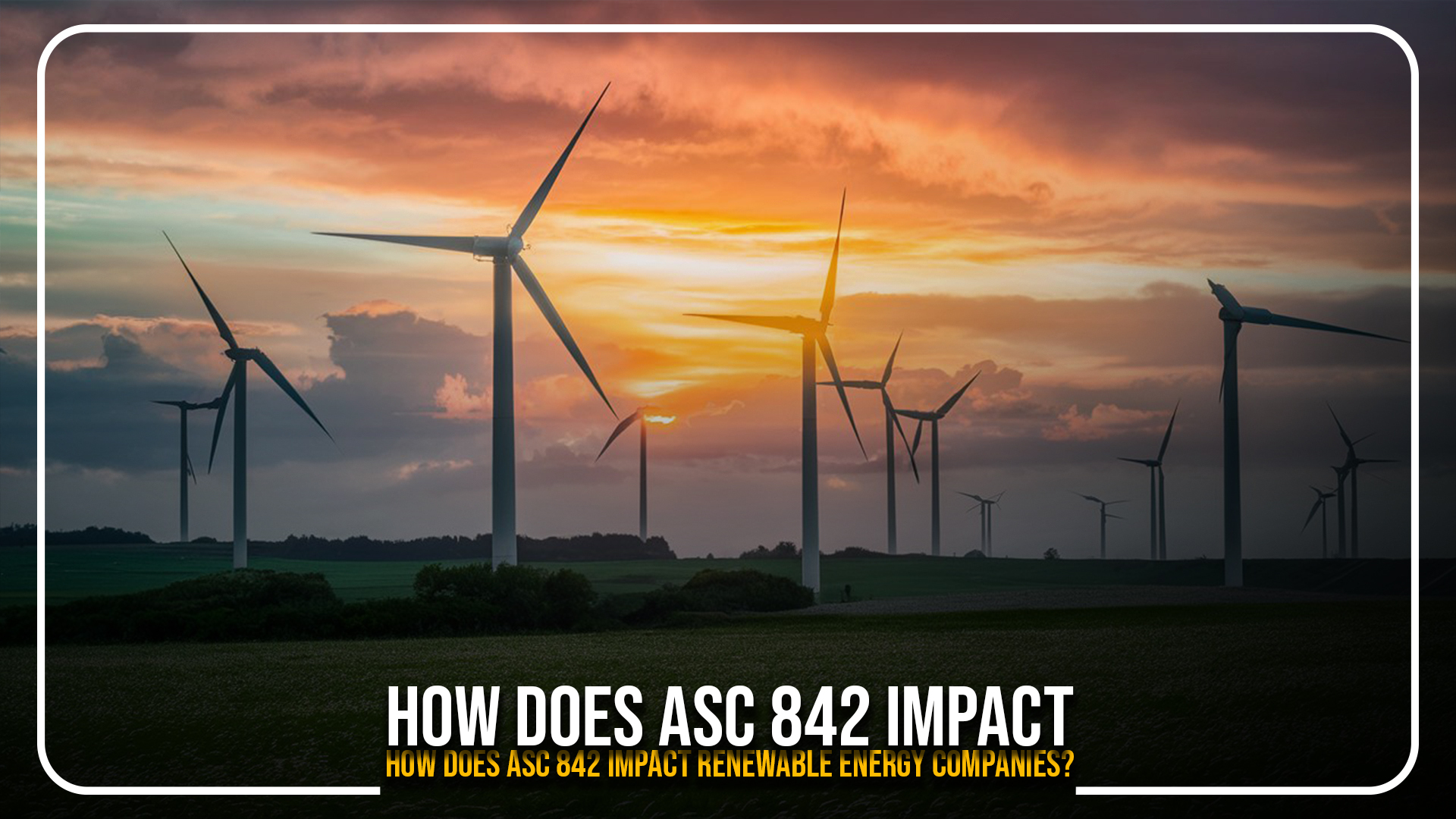
How Does ASC 842 Impact Renewable Energy Companies?
The world of renewable energy, powered by the wind, sun, and geothermal wonders, relies heavily on long-term leases for land, equipment, and transmission lines. However, a recent shift has occurred with the implementation of Accounting Standards Codification (ASC) 842. This new standard throws a curveball, requiring companies to recognize a “right-of-use” asset and a corresponding lease liability on their balance sheets for all leases exceeding 12 months. Ending the era of only capitalizing specific leases, ASC 842 rewrites the rules for how renewable energy companies report their financial health.
Are Land Leases Always Considered Leases Under ASC 842?
How Does ASC 842 Affect Leased Equipment in Renewable Projects?
Are Transmission Line Leases Always Leases Under ASC 842?
Can Power Purchase Agreements (PPAs) be Considered Leases Under ASC 842?
What Are the Unique Challenges for Renewable Energy?
While ASC 842 offers enhanced transparency, it also presents unique challenges for renewable energy companies:
- Distinguishing Leases from Service Agreements: Differentiating between leases and service agreements can be particularly complex for PPAs. ASC 842 emphasizes the transfer of control over the underlying asset and the associated economic benefits. If the agreement grants the renewable energy company significant control over the project’s operation and economic benefits, it likely qualifies as a lease. This distinction can significantly impact financial reporting.
- How will ASC 842 impact key financial ratios?
Recognizing lease obligations as liabilities on the balance sheet can significantly impact key financial ratios like debt-to-equity and leverage ratios. This may necessitate adjustments in financial strategies and communication with investors to maintain confidence.
- Does ASC 842 affect project feasibility?
ASC 842 potentially affects project profitability assessments. The recognition of lease liabilities increases initial project costs, potentially impacting internal rate of return (IRR) calculations and project feasibility evaluations. Companies may need to adjust their financial models and investment criteria accordingly.
- How might ASC 842 impact access to Project financing?
Renewable energy projects often rely on project financing, where lenders base their decisions on the project’s projected cash flow. ASC 842 can potentially alter the project’s cash flow profile due to the recognition of lease liabilities, potentially impacting the availability and terms of project financing.
How Can Renewable Energy Companies Adapt?
Despite the challenges, renewable energy companies can effectively navigate ASC 842 by adopting the following strategies:
- Why is Comprehensive Lease Inventory Crucial?
Conducting a thorough review of existing and future leases is crucial to identify those falling under ASC 842. This includes analyzing lease terms, economic benefits transferred, and the level of control over the underlying assets.
- Who Can Seeking Professional Guidance Help Navigate ASC 842?
Consulting with accounting professionals and industry experts with specific knowledge of ASC 842 and the renewable energy sector can provide valuable insights into interpreting the standard and ensuring consistent application within the company’s specific context. These experts can assist with complex lease classification, discount rate determination, and ensuring compliance with the standard’s intricate details.
- Can Software Tools Ease implementation?
Utilizing specialized software and cloud-based solutions can streamline lease data management, automate calculations, and facilitate compliance with ASC 842. These tools can significantly reduce the administrative burden of implementing the standard and ensure accurate financial reporting.
- Why is Transparency and Communication Essential?
Proactively communicating the impact of ASC 842 on financial statements and project profitability to stakeholders, including investors, lenders, and project partners, is essential for maintaining trust and confidence. Open communication allows for informed decision-making and mitigates potential concerns regarding changes in financial metrics.
How Will ASC 842 Shape the Future of Renewable Energy?
How ASC 842 Can Empower the Renewable Energy Sector?
While ASC 842 presents initial hurdles, it also offers significant opportunities for the renewable energy sector:
- Enhanced Investor Confidence: Increased transparency through the recognition of lease obligations on the balance sheet fosters greater investor confidence. This can make renewable energy projects more attractive, leading to increased investment and capital availability, crucial for accelerating the transition to clean energy.
- Improved Financial Management: ASC 842 encourages better financial management by requiring companies to explicitly recognize their lease obligations. This allows for more informed capital allocation decisions, potentially optimizing project financing and resource utilization.
- Standardized Reporting: ASC 842 establishes a consistent framework for lease accounting across the industry. This standardization facilitates better comparison and analysis of renewable energy projects, enabling investors and stakeholders to make informed decisions based on accurate and comparable financial information.
- Innovation and Growth: By navigating the challenges of ASC 842, renewable energy companies can emerge stronger and more adaptable. This can lead to further innovation in project design, financing strategies, and risk management, ultimately contributing to the continued growth and success of the sector.
Conclusion:
The implementation of ASC 842 marks a significant shift for the renewable energy sector. While requiring initial adjustments, it presents an opportunity for enhanced transparency, improved financial management, and, ultimately, a more sustainable future. By embracing the challenges and leveraging the available strategies, renewable energy companies can effectively navigate the new landscape and contribute to a future powered by clean, renewable energy.
Remember, the journey towards a sustainable future is paved with collaboration and knowledge sharing. By actively engaging with industry experts, seeking professional guidance, and embracing the opportunities presented by ASC 842, the renewable energy sector can continue to thrive and lead the charge toward a cleaner, greener world.
